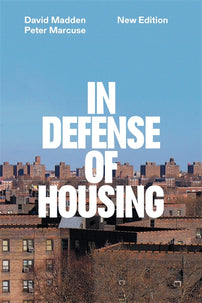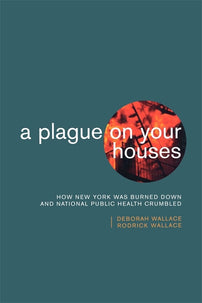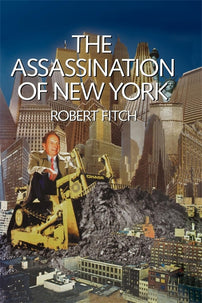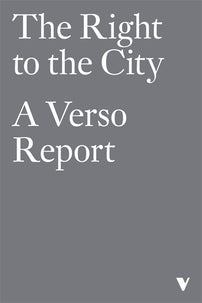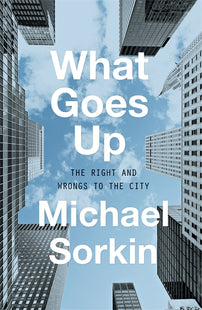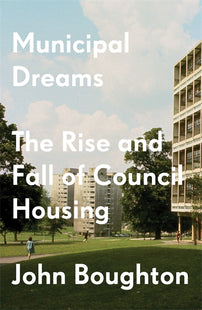Real Estate Greed Caused the Deadly Bronx Fire
New York City and the real estate interests that run it decided long ago that working class lives are worth gambling with.

First published in Socialist Worker. Zach Zill contributed to this article.
The deadliest fire in recent New York City history killed four children and eight adults in a Bronx apartment building last Thursday night [December 8].
Among the dead were Karen Stewart-Francis, her two daughters — 2-year-old Kiley Francis and 7-year-old Kelly Francis — and her niece, 19-year-old Shawntay Young. Stewart-Francis' husband, Holt Francis, is surviving on life support.
"I don't know what to do and I don't know how to feel," Stewart-Francis' mother Ambrozia Stewart told the Guardian. "Four at one time, what do I do?"
New York City Mayor Bill de Blasio didn't have an answer for Ambrozia Stewart's heartbreaking question. Instead, he rushed to assure reporters that the city and the landlord were not to blame for the fire's deadly toll, declaring that there was "nothing problematic about the building that contributed to this tragedy."
De Blasio was lying. The truth is that New York City and the real estate interests that run it decided long ago that Karen, Kiley, Kelly, and Shawntay's lives were worth gambling with — and that it is perfectly acceptable for working-class Bronx residents to burn alive in their homes if it means more profit for the super-wealthy.
They decided long ago that extra profit was worth 7-month-old Amora and her grandmother Maria Batiz dying in a bathtub surrounded by flames as Amora's mother listened helplessly to their screams in a last phone call.
The immediate cause of the fire was a 3-year-old boy playing with the burners on his family's stove. Mainstream media accounts blamed the boy's mother for not closing the apartment door as she fled with her two children, allowing the fire to spread rapidly up the stairwell to the rest of the building.
By law, however, the apartment building was required to have self-closing, fireproof doors — because fire safety shouldn't depend on the split-second decisions of panicked parents trying to save their children.
Such a door on the apartment where the fire originated could have prevented the fire from spreading for 90 minutes. Instead, when firefighters arrived three-and-a-half minutes after the first calls to emergency services, they found burned bodies in the five-floor building's lobby as panicked residents rushed to descend an icy fire escape.
What's worse, this violation was far from an isolated incident: In the past year, the city has cited 7,752 code violations of the self-closing door requirement. Because safety codes are poorly enforced, this is likely a dramatic underestimation of the actual number of violations.
The apartment building at 2363 Prospect Avenue in the Belmont neighborhood was a century-old structure, constructed of flammable brick and plaster that wasn't fireproofed.
Its age made it exempt from requirements such as sprinkler systems and interior steel construction. The building also had multiple additional outstanding safety violations, including at least one nonfunctional smoke detector.
But a spokesperson for the city's Department of Housing Preservation and Development (HPD) insisted that the building had a "relatively low history of repair violations." Either the HPD, like de Blasio, is downplaying how decrepit the building was, or the average building in New York City is disturbingly unsafe.
New Jersey has legislation requiring all landlords to retrofit stairwells to make them fireproof. According to fire safety expert Glenn Corbett, this law has saved lives because firewalls in stairwells give residents hours to escape from a building safely, as opposed to minutes.
In New York, older buildings are not required to meet this standard, so the Belmont fire spread to every floor in the building rapidly. Not all residents had access to a fire escape, and some of the victims died trying to descend the staircases.
By not requiring landlords to implement basic safety measures like sprinklers and fireproof stairwells, the city is protecting the financial interests of landlords at the risk of tenants' safety. The only reason not to make safety measures mandatory is so that landlords can squeeze maximum profit out of working-class tenants.
Those laws that do exist to protect the 70 percent of New York City residents who rent are poorly enforced.
In 2016, two toddlers died in a fire in Bronx public housing just hours after a New York City Housing Authority (NYCHA) worker falsely reported that the smoke alarms in their apartment were working.
This incident prompted a review by the city's Department of Investigation (DOI), which found that NYCHA routinely lied about performing required safety checks, falsifying work orders. As Reuters reported:
The department conducted inspections of 240 apartments that had been recently visited by maintenance workers and found more than half had deficiencies in one or more of the six safety conditions, including smoke alarms, that NYCHA workers must check upon each visit. The report also said 104 of the original work orders for those apartments were missing, in violation of NYCHA policy. Nearly one-third of the work orders for the remaining 136 apartments inaccurately showed that smoke or carbon monoxide detectors were working when they were not.
Thursday's fire was the deadliest in New York City since 1990, when 87 people died in a fire at the Happy Land Social Club less than a mile away from the Belmont fire.
Deaths by fire are dramatically lower than their peak in the 1970s, when city officials pushing an agenda of austerity closed fire stations in poor, Black and Brown neighborhoods.
But the Belmont blaze was hardly an aberration.
In fact, just a few hours later, two men died in an apartment fire in Bedford-Stuyvesant in Brooklyn, bringing December's death toll to 24. Two elderly people died the following day in another Bedford-Stuyvesant apartment fire. And earlier this week, 23 people were injured in a seven-alarm blaze in the Bronx.
Fires are especially common in winter, as tenants unable to afford rapidly rising energy prices in cold weather turn to more dangerous methods of staying warm, such as space heaters. Undocumented immigrants are especially at risk because they are ineligible to receive heating assistance benefits.
The fatal fires almost never affect wealthy New Yorkers. Time after time, it is poor and working-class New Yorkers who die in fires. Landlords are literally getting away with murder.
Fires are one particularly horrifying symptom of a larger problem in New York: As real estate developers continually remake the city in their interests, the working-class majority finds itself increasingly squeezed to the margins, concentrated in old, run-down and unsafe apartments.
More than half of New York City renters pay more than they can afford in rent, and 44 percent of New Yorkers live at or near the poverty line — disproportionately women and people of color. Homelessness in the city is at its highest levels since the Great Depression, with almost 130,000 people sleeping in shelters in 2017 and thousands more living on the streets.
De Blasio has made affordable housing a central part of his administration's identity since taking office in 2014.
In his State of the City address last February, the mayor said, "This affordability crisis threatens who we are, threatens the very soul of this city. We have to right some wrongs. We have to fight an inequality that has grown. I'm very proud to say we have the biggest affordable housing plan in the history of the city."
The de Blasio administration's Housing New York plan promises to build 80,000 units and preserve 120,000 units of affordable housing over 10 years, at a cost of $41 billion. The city now claims that it created 62,500 units in its first three years. The mayor recently doubled down on this promise, pledging $1.9 billion to create an additional 10,000 units for those making less than $40 thousand per year.
Yet de Blasio's housing plan, which relies on rezoning a dozen working-class neighborhoods to incentivize developers to create more affordable units, follows a neoliberal script that will actually worsen the problem.
De Blasio has initiated the Mandatory Inclusionary Housing program (MIH) as a central part of his plan for affordability.
MIH allows developers to build large, mostly market-rate buildings in newly rezoned neighborhoods, with a certain percentage of the units set aside as "affordable." This plan relies on real estate developer profit-making as a precondition for the creation of any new affordable units.
Any plan set up this way is destined to fail from an affordability perspective for multiple reasons. For one thing, the set-aside units are not nearly affordable enough, nor are there enough of them being built.
Then there's the broader impact of allowing a large amount of mostly market-rate development, which will be a general loss of affordability throughout the neighborhoods being targeted. Though each new development may include some affordable apartments, at least as many units that already exist with low rents will be lost, as nearby landlords raise rents in anticipation of a rising market.
Finally, most of the new "affordable" units being built will be allowed to return to market rate in 30 years. So while the plan is made to sound good for advocates of affordability, its real intended audience is the developers and landlords who will be allowed to continue their profit-making at the expense of ordinary New Yorkers.
This is not at all surprising, as developer money is central to all New York City politics, including the de Blasio administration.
As politicians cry crocodile tears over the lives lost in Thursday's fire, it is up to us to demand changes that can prevent these tragedies from happening again and again.
New Yorkers should not be paying an arm and a leg to live in death traps. The city's powerful landlord and developer class must be held accountable to ensure that all New Yorkers live in safe, affordable housing.
Specifically, landlords should be required to retrofit all buildings with safety measures such as sprinkler systems and fireproofing, and the city must actively enforce all safety requirements.
Moreover, everyone, regardless of their documentation status, deserves help paying for heat. The fights against gentrification in many neighborhoods are encouraging. But the next step is a citywide movement to sink de Blasio's crooked rezoning and development plans and to demand safe housing for all and justice for the fire survivors.
After the Grenfell Towers fire in London killed almost 100 people this past June, thousands took to the streets in anger, and they won free housing for the survivors.
As this article was being written, survivors of the fire in Belmont are sleeping in a local high school, mourning their loved ones and wondering where they will go next — in a city where half of Midtown's luxury apartments, including more than half of the apartments in Trump Tower, sit empty, owned as investment properties by the global ruling class.
[book-strip index="1" style="display"]
